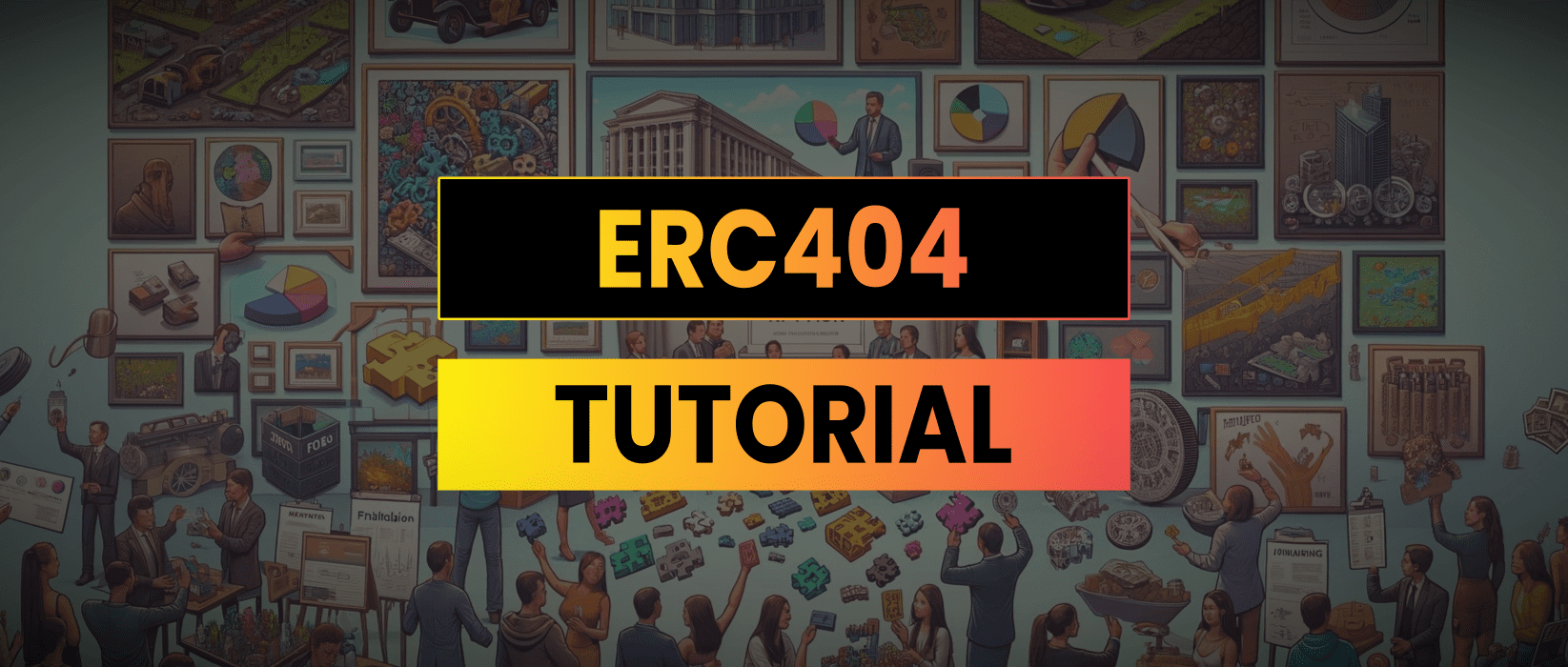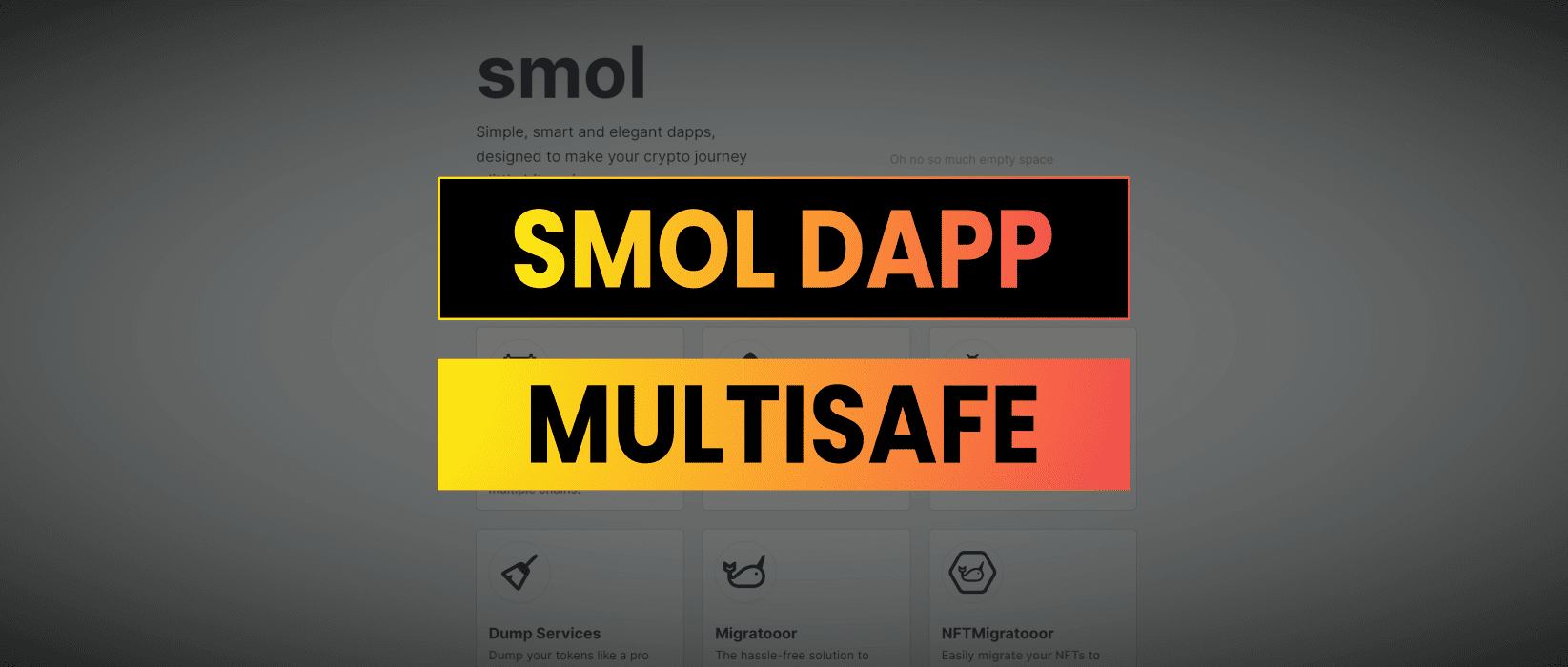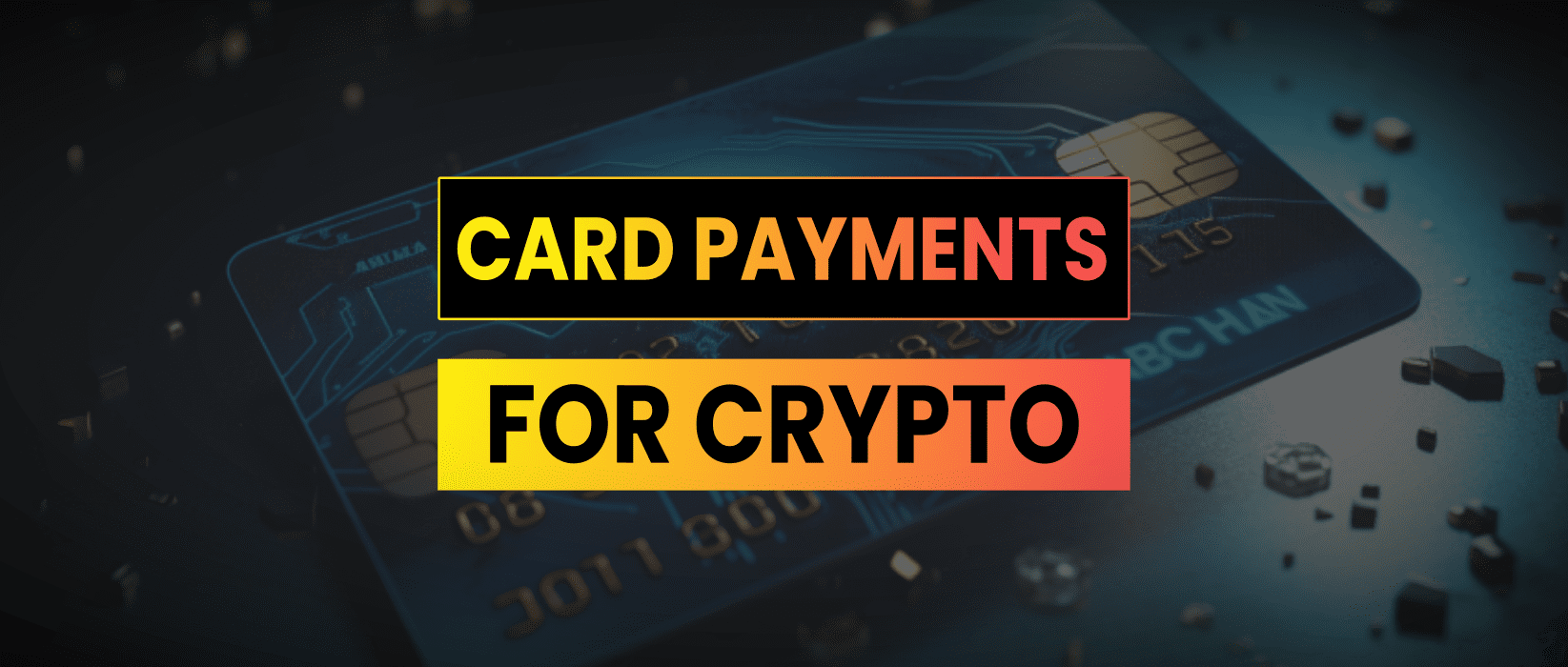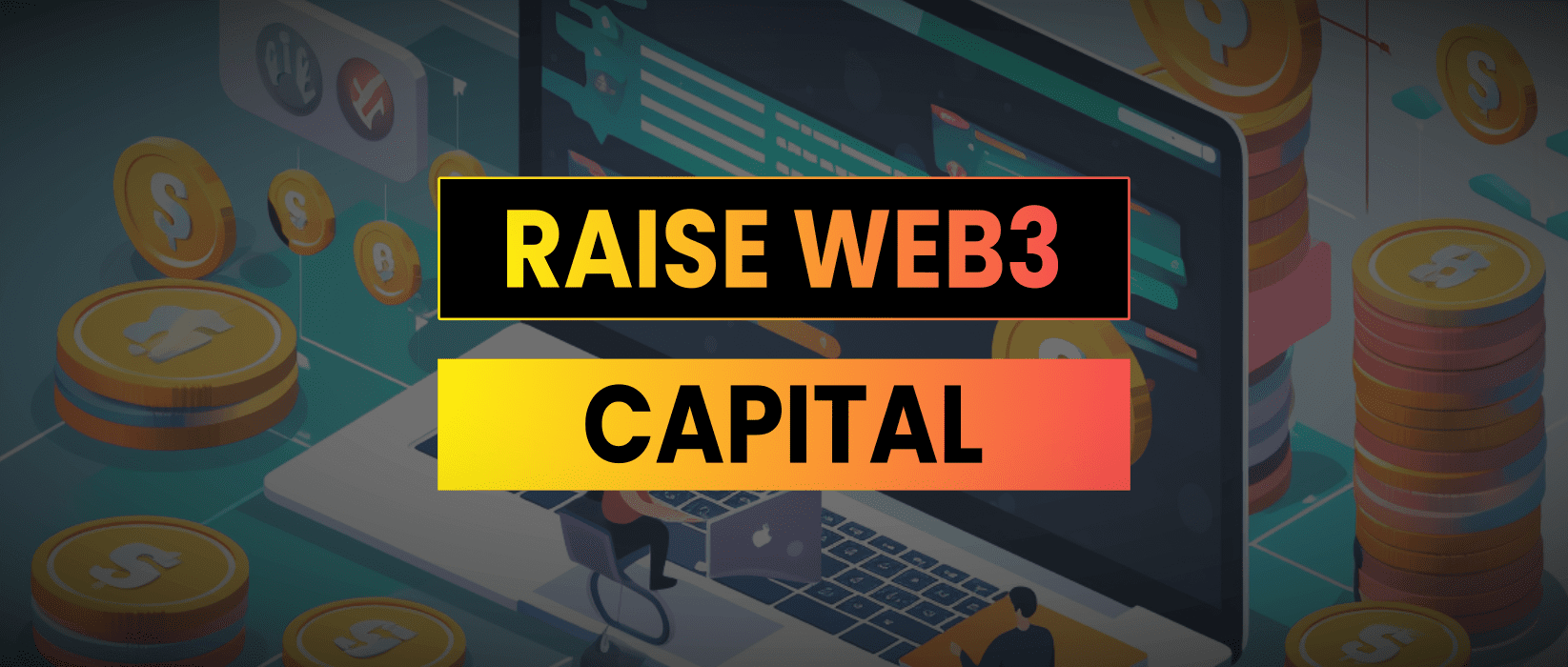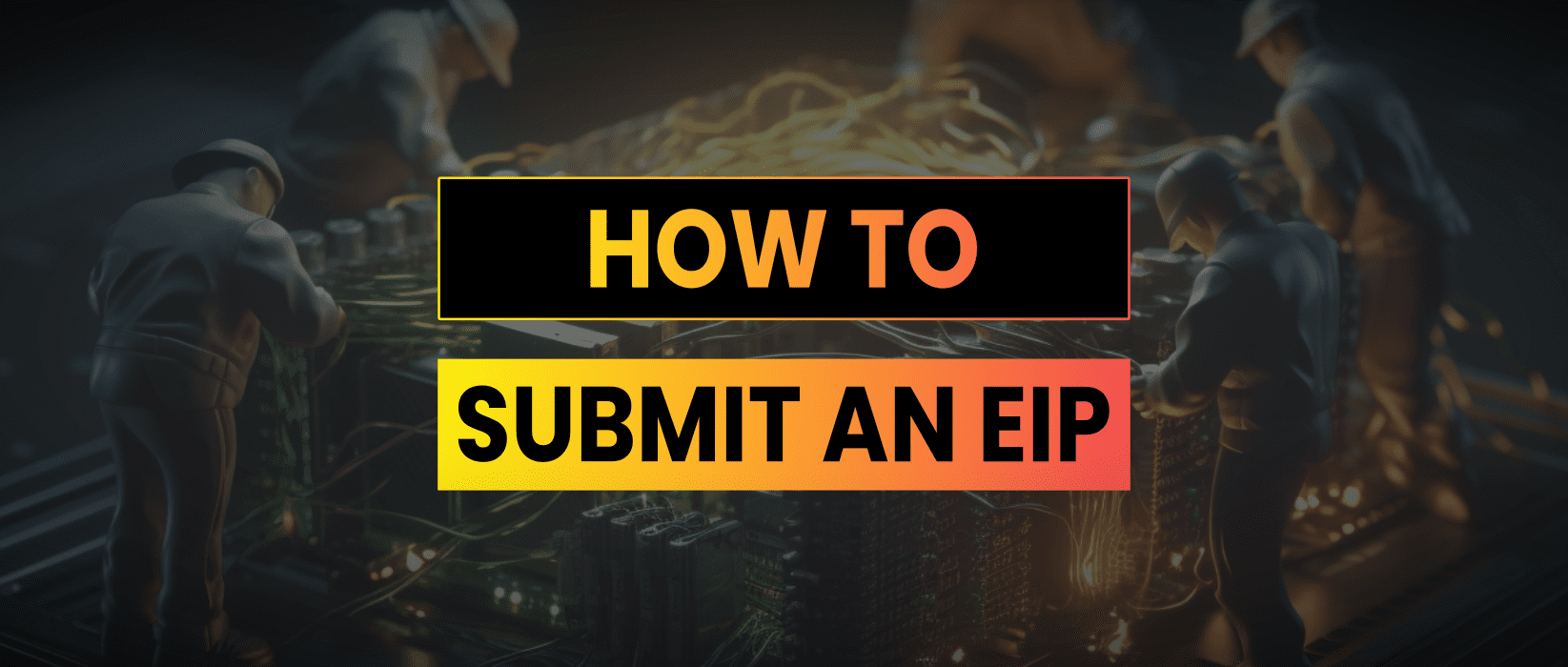Development
-

DeFi Analysis With Rust
In this tutorial I’m going to provide some code and show you how to monitor the number of depositors to Eigenlayer over the last 24 hours. We will be using Rust with the Tokio and Ethers libraries along with the Infura API which you can get a free key from here. The first thing we…
-

Web3 vs Cloud Computing
Have you ever wondered if decentralised data storage can truly rival the convenience and efficiency of traditional cloud services like AWS? Web3 devs today face several significant challenges. On-chain data is currently slow, expensive, and often comes with a poor user experience. However, with the rapid advancements in technology, the future could look very different.…
-

How To Lookup An ENS Name In Python
To check a wallet token balance on the Ethereum blockchain using Python you will need the following: Once we have our API key ready and Python installed we can install web3.py using the following command Now let’s create a file called enslookup.py and add the following code. Enter your Infura API key on line 5.…
-

Building A Portfolio Tracker In Python
In this tutorial we will be building a digital asset portfolio tracking tool using python and the Coinbase API. You’ll need to install python and the following library to make requests. The code for this is open source on Github at: https://github.com/jamesbachini/Python-Portfolio-Tracker Put this in a file called portfolio.py or fork the repo above. Then…
-

Building a Career in Web3
Web3 represents the future of the internet, where developers can deploy permissionless code on a decentralized network. Building a career in this space requires a combination of technical skills, practical experience, and a strategic approach. This article outlines the key steps for anyone looking to forge a career in Web3, from learning Solidity to launching…
-

Creating A Solidity Escrow Smart Contract
In this tutorial, we will create an Escrow contract using Solidity and deploy it to an Ethereum testnet. An Escrow contract is a financial agreement where a third party (the arbitrator) holds and regulates payment of the funds required for two parties involved in a given transaction. It helps make transactions more secure as it…
-

How To Create ERC404 Tokens Solidity Tutorial
An ERC404 token is a digital asset that combines the characteristics of ERC20 fungible tokens and ERC721 non-fungible tokens (aka NFT’s) to enable fractional ownership of an NFT. In essence, ERC404 tokens represent divisible parts of an NFT, allowing multiple individuals to own shares of a single NFT. This approach is designed to enhance the…
-

Adversarial Simulation Testing For Smart Contract Developers
I recently read Gene Kranz’s first hand account of the Gemini and Apollo Nasa missions. He talks about the rigorous simulation testing that flight directors had to partake in prior to a mission. Simulation testing plays a crucial role in ensuring the preparedness of astronauts and flight controllers for spaceflight. This process is managed by…
-

Javascript Smart Contracts
As an experiment I converted this Vyper token contract to a Javascript/Typescript syntax to see if we could make it easier for web developers to get up to speed with smart contract development. Solidity is the most popular smart contract language and it is already based losely on Javascript but there are plenty of syntax…
-

Vyper Tutorial | Learn Vyper In 24 Hours
Vyper is a pythonesque smart contract language that can be compiled and deployed on Ethereum and other EVM blockchains. 90%+ of blockchain devs use Solidity but there are some big projects such as Curve using Vyper and it’s growing in popularity and tooling compatibility. The best way to get started with Vyper is to head…
-

Using Vyper With Remix
You can now use Vyper (a smart contract programming language similar to python) with remix to build and deploy contracts on Ethereum and other EVM blockchains. The first step is installing the Vyper plugin at https://remix.ethereum.org/ where you’ll find a list of plugins using the icon in the bottom left. You’ll then get an extra…
-

Sell Me This Pen.sol
What happens when you ask a blockchain developer to sell you a pen? Etch your words permanently on the Ethereum blockchain where they will outlive you & create an everlasting record of your thoughts, contemplations & predictions. This is your chance to leave an eternal mark and express your presence in the digital age while…
-

How To Deploy A Website Or dApp To IPFS | Fleek Tutorial
Gm, in this tutorial we are going to be deploying a website to IPFS to create a decentralized frontend. To do this I’ll be using Fleek which has a free tier and which suits our needs. James On YouTube Watch On YouTube: https://youtu.be/https://youtu.be/DmpXbmjnpec |Subscribe We will start by getting our site on Github. We can…
-

Etherspot Account Abstraction Tutorial
I find it surprising and rare when using new technology and it just works and is intuitive. Getting up to speed with Etherspot and account abstraction is one of those rare occasions. In this tutorial I’ll show you how I created a little demo to create a smart wallet, fund it and then send batched…
-

TradingView Pine Script Examples | Master Pine Script With 6 Real World Examples
TradingView’s Pine Script coding language has emerged as the leading tool for traders looking to craft custom indicators and strategies with accuracy and ease. In this Pine Script tutorial I’ll provide a practical gateway into the intricacies of this coding language, tailored with useful examples to get you started. Whether you’re a novice coder or…
-

Solidity Proxy Contract Tutorial With Example Code
This Solidity proxy contract tutorial delves into the concept of upgradeable proxy contracts in Solidity, specifically utilizing OpenZeppelin’s proxy contract template. We’ll start with an understanding of how these contracts work, the compromise of immutable decentralization vs upgradeability and then dive into practical code examples. Upgradeable Proxy Contracts A proxy contract is a design pattern…
-

LLM vs AGI | Limiting Reality of Language Models in AGI
These remarks by Sam Altman, former CEO of OpenAI, highlight a fundamental limitation in the current approach to developing Artificial General Intelligence (AGI) through the advancement of large language models (LLMs) like ChatGPT. “We need another breakthrough. We can still push on large language models quite a lot, and we will do that. We can…
-

Web3 Session Keys
We are going on a journey to seamlessly integrate session keys into a web3 dApp, striking a balance between autonomy and ease of use that your users are yearning for. The goal is to enable users to authenticate with a digital wallet and store a session key on their device. This session key will provide…
-

Ethers-rs Tutorial | The Rust Web3 Library
In this tutorial we will be setting up a Rust script to connect to a smart contract on a blockchain network to display on-chain data using the ethers-rs library. James On YouTube Watch On YouTube: https://youtu.be/FA7WFGtyri8 |Subscribe Let’s start by setting up a new Rust project (you’ll need rust installed on your device and I’ll…
-

ChatGPT Plus vs Free | Is The Paid Version Of ChatGPT Worth It?
ChatGPT Plus vs Free [Video] James On YouTube Watch On YouTube: https://youtu.be/U3xXd3vV4iU |Subscribe Why Upgrade To ChatGPT Plus? ChatGPT Plus is the paid version of ChatGPT, it currently costs $20/month + VAT and there are 3 main reasons why the average user would want to upgrade to the premium version: On top of this paid…
-

Asymmetry Finance | DeFi Analysis Report
Asymmetry Finance has emerged as a significant player in the liquid staking wars, offering an aggregated liquid staking token. This article explores the core functionalities of Asymmetry Finance and its core product safETH. This is a write up of my internal research notes, this is not a sponsored post and I do not hold any exposure…
-

WAGMI Tutorial | The Web3 React Framework
WAGMI is a set of Typescript React hooks for web3 which enables developers to connect to smart contracts on blockchain networks. In this tutorial we will look at how to install and setup a boilerplate in WAGMI and then build a simple read query. WAGMI in 3 Mins [Video] James On YouTube Watch On YouTube:…
-

How I Track Developer Activity For Crypto Projects
In this article I’m going to share how to track developer activity for crypto projects for fundamental analysis. James On YouTube Watch On YouTube: https://youtu.be/DTI7ELSA6CA |Subscribe Understanding the Crypto Development Ecosystem Cryptocurrencies like Bitcoin and Ethereum as well as the majority of blockchain projects are fundamentally software. They are applications that run on a decentralized…
-

How I Built A Smart Money List On Twitter
X formerly known as Twitter includes two features which allows us to create a list of accounts from people that frontrun narratives and successful trades. tl;dr if you just want to see the final list it is here: https://twitter.com/i/lists/1712044491618545903 James On YouTube Watch On YouTube: https://youtu.be/4qYraarbsYs |Subscribe Step 1. Collecting Project Data My main focus…
-

OpenZeppelin 5 Solidity Common Errors
OpenZeppelin have just released version 5 of their Solidity smart contract libraries and there are some breaking changes that are going to cause errors. The two main ones are the Ownable.sol import which allows devs to create onlyOwner functions and the token hooks on ERC20, ERC721 & ERC1155 contracts. Ownable Constructor If you are getting…
-

Hardhat Solidity Tutorial
Hardhat is an extensive framework for developing, testing and deploying solidity smart contracts. In this Hardhat Solidity tutorial you will learn how to set it up, how to create hardhat unit test tricks, working with hardhat scripts and finally some Hardhat tips and tricks for Solidity developers. Hardhat Easy Setup Hardhat is built on NodeJS…
-

NEAR BOS | Blockchain Operating System
Near BOS is a complete framework designed for creating, testing, deploying and distributing decentralized application frontends. Developers can create Javascript based dApps with the frontend code stored and distributed from a blockchain. It is blockchain agnostic so you can store data on Near and EVM chains. BOS is a collection of components, blockchains & gateways.…
-

Celestia | Modular AppChains
Celestia is one of the most widely used scaling solutions for projects that need high throughput, cheap transactions on a dedicated decentralized public blockchain. The aim is for “developers to deploy their own blockchain as easy as deploying a new smart contract” This is a write up of my internal research notes, this is not…
-

Smol dApp | MultiSafe MultiChain MultiSig Wallets
Smol dApp is like a swiss army knife of useful tools for DeFi. Their main offerings are: The product we are going to look at todays is their flagship MultiSafe wallets. This is a GnosisSafeProxy contract which requires a set number of wallets to sign off on a transaction before it goes through. For example…
-

Hardhat vs Foundry
I started developing solidity with Truffle, then moved to Hardhat, then moved to Foundry, then moved back to Hardhat before eventually settling using both on a regular basis. In this article I’ll talk about the benefits and disadvantages of Hardhat and Foundry so you can make an informed decision about which framework is better for…
-

Calculating The Intrinsic Value Of Bitcoin & Ethereum
Calculating the intrinsic value of Bitcoin, Ethereum and other digital assets is challenging due to its intangible nature. In this analysis I’m going to discuss common methods of calculating intrinsic value and then create a model using a combination of the methods. tl;dr based on the models described below: Methods Of Calculating Intrinsic Value Store…
-

The Essential Checklist For Deploying A New Token
In this article we are going to look at all the things that need doing when launching a new token to create a token deployment checklist for developers and founders. At the end there is a big list of all the token listing sites that you can submit your new token to. Unit Tests &…
-

Solidity Tutorial | Gas Paying NFT
The challenge is to create a NFT contract that charges 1 ETH to mint but then stores the entire amount as collateral in a liquid staking token. As staking rewards come in they get distributed to the holders of the NFTs. At any time a user can burn the NFT to reclaim the 1 ETH.…
-

Web3 PWA Boilerplate | How To Create Next Generation dApps
One of Web3’s biggest issues is getting around the centralization of app stores and their stringent terms on the commission requirements for digital asset payments and transfers. Progressive Web Apps (PWAs) in my opinion are the best solution as it allows you to install dApps directly on to a mobile device without using the app…
-

Chainlink CCIP | Cross-Chain Interoperability Protocol
From all the announcements at ETHcc, the release of Chainlink CCIP as a direct competitor to LayerZero for cross-chain communications and bridging technology, is perhaps the most interesting. The inherent security risks associated with bridging technology means that Chainlink are in a good position to leverage their brand and security record to gain traction in…
-

Using Ethereum To Offset Bitcoin’s Carbon Footprint
Never have I sounded more like an Ethereum maxi, but there is a point beyond the provocative title. In this post I’m going to explore the potential for investors to use carbon credit tokens on Ethereum to offset the electrical consumption of BTC mining on their Bitcoin holdings. This novel idea provides the opportunity to…
-

A Close Look at PYUSD | Implications Of The PayPal Stablecoin
In August 2023 Paypal unveiled their new stablecoin, an ERC20 token built on Ethereum. The code is open source, the contract is verified on Etherscan, it’s a real token which is going to be available to Paypal’s 435m users. What Is pyUSD & How Does It Work The Paypal stablecoin was developed in partnership with…
-

How To Shuffle A Deck Of Cards In Solidity
In this post I explore how to simulate the shuffling of a deck of cards, addressing the challenges of randomness and predictability in a solidity smart contract environment where every input and output is part of the public record. Whether you’re looking to create an on-chain poker game, a collectible card game, or you’re simply…
-

The Secrets Web3 Marketers Use To Launch New Crypto Projects
My previous background in digital marketing and now having worked in the blockchain sector for 6 years provides unique vantage point on the differences between conventional and web3 marketing. Successful crypto projects create communities of advocates who act as micro-influencers championing the cause. In this article I’ll discuss why “build it and they will come”…
-

Card Payments For Crypto With Wert
One of the challenges cryptocurrency projects face is the seamless integration of traditional payment systems, such as credit/debit card payments, into their crypto based ecosystems. The issue derives from the potential for fraud because card payments can be reversed long after the transaction has taken place, while crypto transactions are immutable. This is a write…
-

Automate Solidity With MEV
There are no cron jobs in Solidity or native to the Ethereum blockchain. To automate Solidity code we can either use an external service/oracle or we can incentivise MEV searchers to complete tasks efficiently on our behalf. This type of Solidity automation is very common and used widely across liquidation systems which require reliable, fast,…
-

Solana SoLang Tutorial | How To Deploy Solidity On Solana
In this SoLang tutorial I’ll show you how to deploy Solidity code on Solana. We will start by setting up a dev environment before looking at some of the nuances in writing SoLang contracts. I’ll end on a few security considerations and a comparison to developing on Solana with SoLang vs Rust. Setting Up A…
-

Infura vs Alchemy
Most users connect to blockchains using RPC node services. This is sometimes taken care of in the background, for example Metamask uses Infura nodes to send and receive transactions. Web3 developers use custom RPC nodes for their deployment scripts and transactions. Operating the nodes requires a reliable infrastructure service, and two of the most popular…
-

Building LayerZero OFT Tokens In Solidity
LayerZero OFT tokens are a new standard for cross-chain assets. OFT’s (Omnichain Fungible Tokens) are not actually tokens themselves, but rather a set of instructions that tell LayerZero how to transfer tokens between different blockchains. In this tutorial we will be building a LayerZero OFT ERC20 token using Solidity and Remix. How LayerZero OFT Tokens…
-

XRP Legal Case | What It Means For Developers
In this article I’m going to be breaking down the document filed by judge Torres yesterday and consider what it means to developers working in the blockchain and web3 space. Highlights From The Ruling The full document is available here:https://www.nysd.uscourts.gov/sites/default/files/2023-07/SEC%20vs%20Ripple%207-13-23.pdf I’ve picked out some highlights Programmatic SalesHaving considered the economic reality of the Programmatic Sales,…
-

Uniswap v4 Hooks
Hooks in Uniswap v4 are external contracts that execute specific actions at certain points during the execution of a liquidity pool. These hooks provide flexibility and customization options for developers to create additional features for liquidity pools. Uniswap v4 hooks can be used to: A 3rd party developer can write a solidity hook contract with…
-

3 Ways To Raise Web3 Funding
In this article I’ll explore 3 ways in which you can raise funds for your project with web3 products. Membership NFT A NFT is a non-fungible token, they are often represented as a unique image which can contain additional rights such as: To execute a NFT drop, the following steps can be taken: If any…
-

Solidity Error Codes | Not Always What They Seem
I get a lot of comments from Solidity tutorial videos and in Github issues asking how to resolve common solidity error codes. In this article I’ll go through some of the most frequent solidity issues, what they mean and how to resolve them. UNPREDICTABLE_GAS_LIMIT This is the most common and confusing error in Solidity The…
-

Lybra Finance | DeFi Analysis Report
Lybra Finance allows stETH stakers to mint the eUSD stablecoin which has a 7.2% APY. This is a write up of my internal research notes, this is not a sponsored post however I have purchased an allocation of LBR Lybra Finance’s governance token in my personal portfolio. Do your own research, not investment advice. Update…
-

Assessing Smart Contract Security Auditors
A smart contract audit can cost anything from $5,000-$250,000 USD. Within this range there is a wide range of services, some offer better value for money than others. In this article I will go through the options for founders looking to hire an auditor and some of the checks you can do to ensure you…
-

Gnosis Safe | The Most Secure Multisig Wallet For Your Crypto
Gnosis Safe multisig wallets are used by institutions and individuals to hold some of the largest quantities of funds on the Ethereum network. The free to use wallet includes multisignature functionality for enhanced security and control over digital assets. It is developed by Gnosis, a blockchain technology company based out of Switzerland and Germany, known…
-

Ethereum Improvement Proposal | How To Submit An EIP
Submitting an Ethereum Improvement Proposal (EIP) is a straightforward process that allows you to contribute your ideas and suggestions to the Ethereum community. Here’s a step-by-step guide on how to submit an EIP: What Is An Ethereum Improvement Proposal An Ethereum Improvement Proposal (EIP) is a formal document that provides technical specifications and rationales for…
-

Ultimate Guide To Hire A Solidity/Web3 Developer
In this comprehensive guide, I will explore how to hire a Solidity/Web3 developer. Contractor, Partner or Employee The first thing you need to decide is whether you want to hire someone on a permanent basis or not. With Solidity development the contracts don’t tend to get updated once they are deployed so the bulk of…
-

How Wrapped Tokens Like wETH & wBTC Work
In this article we will look at how different wrapped tokens work and where the underlying collateral is stored. What Are Wrapped Tokens? Wrapped tokens are generally ERC20 tokens that represents another underlying asset, typically a cryptocurrency or real world asset. The purpose of wrapping a token is to enable its use within the DeFi…
-

3 Tips For Gas Efficient Solidity Smart Contracts
Here are 3 tips which could be considered the low hanging fruit of gas efficient solidity smart contracts. James On YouTube Watch On YouTube: https://youtu.be/xfNHzqkMWEQ |Subscribe Use Correct Modifiers & Declarations This is the simplest way to get some small wins with gas optimisation. Go through your contract and define anything that shouldn’t change as…
-

Snapshot | Gasless Voting for Decentralized Communities
In decentralized communities voting plays a crucial role in governance and development of roadmaps. Snapshot is disrupting the traditional DAO voting model with a gas free voting platform. This is not a sponsored post and I have no stake in Snapshot, I do however like to use and promote open source tools which enable decentralized…
-

Introduction to Flash Loans | Unleashing Capital On Demand
In this tutorial on flash loans we will be creating a Solidity smart contract which takes a flash loan from Uniswap v3. This allows you to borrow huge amounts of capital with the catch that you have to pay it back in the same block or the whole transaction is reverted. James On YouTube Watch…
-

Uniswap Market Maker Bot | Managing Token Liquidity On Uniswap
In this tutorial I am going to go through how I built a market maker bot to manage liquidity on Uniswap v3 for a token pair. The idea is to create a automated trading bot which buys tokens when price falls below a base line value and sells tokens when price is above the base…
-

Ethers vs VIEM | Which Web3 Frontend Library?
Ether.js took over from Web3.js as the number one library for connecting up our dApps to smart contracts running on EVM blockchains. Recently Ethers v6 was released and VIEM is disrupting the space by offering a lightweight Ethereum client library from the authors of WAGMI react hooks. I have always been a big fan of…
-

How To Create A BRC20 Bitcoin Token
In this tutorial we will create our own BRC20 token on the Bitcoin network. James On YouTube Watch On YouTube: https://youtu.be/6eTN2fVd4Pw |Subscribe What are BRC20 Tokens? BRC20 tokens are created using the Bitcoin Ordinals protocol. The Ordinals protocol is a set of rules that govern how inscriptions are created, transferred and managed. Bitcoin and the…
-

Hyperledger Fabric | IBM’s Enterprise Blockchain
Hyperledger Fabric is a permissioned blockchain platform designed for developing enterprise grade distributed ledger applications. How Does Hyperledger Fabric Work? Hyperledger Fabric uses a pre-authorised network of nodes, with each node storing a copy of the blockchain ledger. It is EVM based which means you can run Solidity code there, all be it with some…
-

Taproot Explained | Beneficial For Bitcoin?
The Taproot Bitcoin upgrade was activated on November 14th 2021. It was designed to improve privacy, efficiency and the network’s ability to process custom logic. The upgrade inadvertently made it possible to link metadata to Bitcoin transactions. By using ordinal theory it is possible to inscribe each satoshi (lowest denomination of Bitcoin) with a corresponding…
-

How To Create Your Own Memecoin With Solidity and Uniswap
In this tutorial we will be creating a permissionless, ERC20 memecoin and deploying it with a Uniswap v3 liquidity pool so users can buy it on the decentralized exchange. This tutorial is for demonstration purposes, don’t speculate on memecoins. James On YouTube Watch On YouTube: https://youtu.be/-bVzqtIa0bc |Subscribe The full source code for this is at:…
-

What is Pepe | A Memecoin Story
The Pepe memecoin is a cryptocurrency based on the Pepe the Frog meme, which originated on the imageboard website 4chan in 2005. The meme gained mainstream popularity in 2016 when it was adopted by supporters of then-presidential candidate Donald Trump. PepeToken is an ERC20 token on the Ethereum blockchain. It is widely traded across many…
-

Advice For Hackathons | 9 Tips For Competing In Hackathons
Hackathons are a great way to socialise with other developers and build projects over a short period of time for fun and profit. James On YouTube Watch On YouTube: https://youtu.be/mnBofeo1Ib0 |Subscribe Work on something you are passionate about This starts with choosing a hackathon that is based on tech that you are interested in. I’m…
-

Account Abstraction – ERC4337
ERC4337 is an Ethereum standard that achieves account abstraction on the protocol without any consensus-layer changes. Deployed on the Ethereum mainnet in March 2023, ERC4337 makes it possible to transact and create contracts in a single contract account. Account abstraction opens the door to user-friendly crypto wallet designs that could potentially facilitate broader adoption. How…
-

Bitcoin Ordinals
Bitcoin ordinals are a means of creating NFTs by attaching data such as images, videos, and more to an individual satoshi on the base Bitcoin blockchain. They use an arbitrary but logical ordering system called ordinal theory to give each individual Bitcoin satoshi a unique non-fungible reference. What Are Bitcoin Ordinals? Bitcoin ordinals, also known…
-

Solidity vs Vyper
Solidity and Vyper are the two most popular programming languages for blockchain developers on Ethereum. Both of these languages have their own strengths and weaknesses which we will go through to help developers decide which is best suited for their project. Solidity Solidity is the most widely used programming language for developing smart contracts on…
-

Sign In With Ethereum Tutorial
To sign in with Ethereum using Metamask we will be using the ERC4361 specification that allows Ethereum accounts to authenticate with off-chain services using a standard message format. This technology offer users a self-custodial alternative to centralized identity providers that generally use email:password credentials. In Web3 applications we can improve user experiences and establish a…
-

Solidity Callback | Solidity Tips & Examples
A callback function in Solidity allows us to pass a function reference from one contract to another and have it execute as part of an atomic transaction. James On YouTube Watch On YouTube: https://youtu.be/pjm0eOelPXc |Subscribe Let’s first take a look at an example from the Solidity Snippets Github repo. Full code at: https://github.com/jamesbachini/Solidity-Snippets/blob/main/contracts/Callback.sol This code…
-

Strings in Solidity | Solidity Tips & Examples
A string in Solidity is a data type used to store text. Working with strings in Solidity can be challenging due to the limitations and efficiency required by the Ethereum virtual machine. This article aims to provide a comprehensive guide on how to use strings in Solidity, covering their properties, limitations, and best practices for…
-

Timestamp in Solidity | Solidity Tips & Examples
A timestamp is a numerical value that represents a specific moment in time. It’s often used to track when a certain event occurred or when a piece of data was created or modified. The most common way to represent a timestamp is by using the number of seconds that have elapsed since a specific moment…
-

encodeCall in Solidity | Solidity Tips & Examples
From Solidity version 0.8.11 we can use an interface to define a function to pass to encodeCall parameters. encodeCall is a function that allows you to encode a function call with its parameters into a single byte array. This byte array can then be used to make a low-level call to another contract’s function. Here…
-

Custom Error Handling in Solidity | Solidity Tips & Examples
Custom error handling enables Solidity developers to efficiently handle reverts and failed transactions including logging parameters. Let’s first take a look at an example from the Solidity Snippets Github repo: Note that the Solidity compiler version must be greater than 0.8.4 to use custom errors. Customer errors are supported by Etherscan and most other block…
-

Solidity Libraries | Solidity Tips & Examples
A solidity library is a reusable contract that contains functions that can be called by other contracts. When you import a Solidity library into your contract, you can use the functions provided by the library. How To Import Solidity Libraries In your smart contract, you can import the library by using the import keyword followed…
-

Random Numbers in Solidity | Solidity Tips & Examples
Generating a random number in Solidity is not as straightforward as in some other programming languages, because the Ethereum blockchain is deterministic, meaning that multiple execution clients or nodes must come to the same conclusion about the state of the blockchain. For many use cases using the new prevrandao global variable provides “good enough” randomness…
-

Conditional Statements & Loops in Solidity | Solidity Tips & Examples
Conditional statements & loops in Solidity are fairly intuitive and follow the conventions of other languages such as Javascript. In this article we will go through some examples of each before looking at the relational operators we can use within these statements. if statement The “if” statement is used to execute a block of code…
-

Natspec in Solidity | Solidity Tips & Examples
Natspec comments are important for Solidity developers to understand because sooner or later you will come across a code base that requires you work with them. Proponents will say Natspec makes the code more readable and understandable. While I personally disagree with this and prefer to separate code and documentation, the format is popular and…
-

How The Twitter Algorithm Works
On the 31st March 2023 Twitter open-sourced large sections of it’s algorithm which ranks content. This provided refreshing insights into how large scale social media applications rank content. In this article I’m going to look at how the algorithm works and how content creators can use this new information to gain more reach and influence.…
-

ERC1155 Token Contract | Solidity Tips & Examples
ERC1155 offers a more flexible and efficient way of managing fungible and non-fungible tokens, making it an attractive option for developers who want to create complex digital assets with multiple use cases. In this blog post, we’ll dive into the details of ERC1155 and explore why it’s becoming a preferred choice for Solidity developers looking…
-

ERC721 Token Contract | Solidity Tips & Examples
The ERC721 Token contract is the original industry standard for NFTs (Non-fungible tokens). In this article we will look at a simple example and talk about some of the best practices around building ERC721 Tokens. James On YouTube Watch On YouTube: https://youtu.be/B64VBGt3tMU |Subscribe Why Use ERC721 Token ERC721 is a standard interface for NFTs on…
-

ERC20 Token Contract | Solidity Tips & Examples
ERC20 tokens have become the de facto standard for creating tokens on Ethereum and are widely used in many DeFi protocols for things like governance and utility tokens. Why Use ERC20 Token Solidity developers use ERC20 tokens because they are the industry standard for fungible tokens (where every token is equal to another one). The…
-

Merkle Tree in Solidity | Solidity Tips & Examples
Merkle Trees provide an efficient way to verify data in Solidity. This reduces the gas cost for on-chain storage when validating large data sets such as a large list of addresses. James On YouTube Watch On YouTube: https://youtu.be/NTPpyL4pJG0 |Subscribe How Do Merkle Trees Work Merkle trees are a data structure that allow efficient and secure…
-

How To Emit Events in Solidity | Solidity Tips & Examples
A Solidity Event is a way for smart contracts to communicate with the outside world by providing a mechanism for emitting messages that can be observed by external applications. It’s like a signalling message that is broadcast when a certain condition is met within the smart contract. Emitting Events In Solidity Here is a simple…
-

Bulk Send Tokens & ETH Contract | Solidity Tips & Examples
Sending payments in bulk can be a tedious and time-consuming process, especially when dealing with a large number of recipients. However, with a Solidity smart contract, bulk payments can be executed in a matter of seconds, providing a more efficient and cost-effective solution for managing bulk transfers. In this article, I will walk you through…
-

Multiple Return Values | Solidity Tips & Examples
In Solidity we can multiple return values from a function. This enables us to efficiently move data about within the application flow of a smart contract. In this example we are returning three variables enclosed within brackets. Note that the data types of these variables are defined at the top of the function in the…
-

Modifiers in Solidity | Solidity Tips & Examples
Modifiers in Solidity are a way to add a certain condition to functions within a smart contract. They allow developers to define a piece of code that can be reused across multiple functions and contracts, making your code more modular and easier to read. A modifier is defined using the modifier keyword, followed by a…
-

Struct in Solidity | Solidity Tips & Examples
A struct in Solidity is a data type that allows you to group together multiple variables of different data types into a single unit. This is useful because it gives us a convenient container to package structured data, it enables us to pack variables into memory slots more efficiently and it allows us to get…
-

Ownable Contracts | Solidity Tips & Examples
Ownable contracts in Solidity are used to implement access control for certain functions. The idea is that only the contract owner, who is typically the deployer of the contract, can execute these protected functions. To do this we will first import the OpenZeppelin library Inside our contract we can then add the onlyOwner modifier to…
-

Payable Transfers | Solidity Tips & Examples
Payable transfers are one of a number of ways to send ether from a Solidity smart contract to an external address. In this next example we create a fallback function so that any user can send this contract ether and it will get split between the different addresses. Full code at: https://github.com/jamesbachini/Solidity-Snippets/blob/main/contracts/PaymentDivider.sol Payable fails if…
-

Solidity Interface | Solidity Tips & Examples
A Solidity interface is code that provides a set of function declarations without any implementation details. Interfaces are used to interact with 3rd party contracts or external systems by defining a common set of functions that both parties agree to implement. Interfaces are used to define a contract’s external-facing functions, which is the only part…
-

OpenZeppelin Libraries | Solidity Tips & Examples
OpenZeppelin libraries are popular for building secure smart contracts on top of pre-audited code in Solidity. The framework includes a number of reusable smart contract components, such as token contracts, access control contracts, and math libraries. In this article we will explore the various Libraries available within the OpenZeppelin framework to give you a tool…
-

Arrays in Solidity | Solidity Tips & Examples
Arrays are a fundamental data structure in programming, and Solidity is no exception. In Solidity, there are several types of arrays available, including dynamic arrays, fixed-size arrays, and multi-dimensional arrays. Dynamic Arrays Dynamic arrays are the most common type of array in Solidity. These are arrays whose length can be changed during runtime. To declare…
-

Get Contract Balance | Solidity Tips & Examples
To get the contract balance in solidity there are a few different methods depending on if you want the Ether balance or an ERC20 token balance. Contract Balance Eth You can use the address type’s balance property to get the balance of any address, including the contract’s own address. The this value is used to…
-

Mapping in Solidity | Solidity Tips & Examples
This article explores how mapping in Solidity is used to for storing key->value pairs, where the keys are of a specific data type and the values can be of any data type. Mappings are declared using the mapping keyword, followed by the key data type in parentheses and the value data type after the parentheses.…
-

Variables in Solidity | Solidity Tips & Examples
Variables in Solidity can be classified into several categories based on their data types and scope. In this article we will explore all the different uses of variables in Solidity and look at some example code. Variables in Solidity Solidity variables are used to store and manipulate data in our smart contracts. They come in…
-

ERC721 vs ERC1155 | Solidity Tips & Examples
Today we will discuss the differences between ERC721 vs ERC1155 smart contracts and the use cases where each is best suited. These are the two most popular types of smart contracts used for the creation of NFTs (non-fungible tokens). James On YouTube Watch On YouTube: https://youtu.be/B64VBGt3tMU |Subscribe ERC721 Smart Contract ERC721 is the original standard…
-

ERC20 Carbon Credits | Creating A Depleting Token
Carbon credits are used to tokenise finances put towards carbon offsetting. On-chain products often have a purchase and burn mechanism where a user must first purchase the token on a DEX and then manually execute a transaction to burn the token. I had the idea to create a automatically depleting token which you just hold…
-

Anonymous Developer Tutorial | How & Why You Should Code Anonymously
There are plenty of articles and content about why you should be an anonymous developer for blockchain projects but I haven’t seen much content about best practices and how to actually set up an anonymous development environment. In this article we will cover the following:- Anonymous Developer Video Tutorial James On YouTube Watch On YouTube:…







